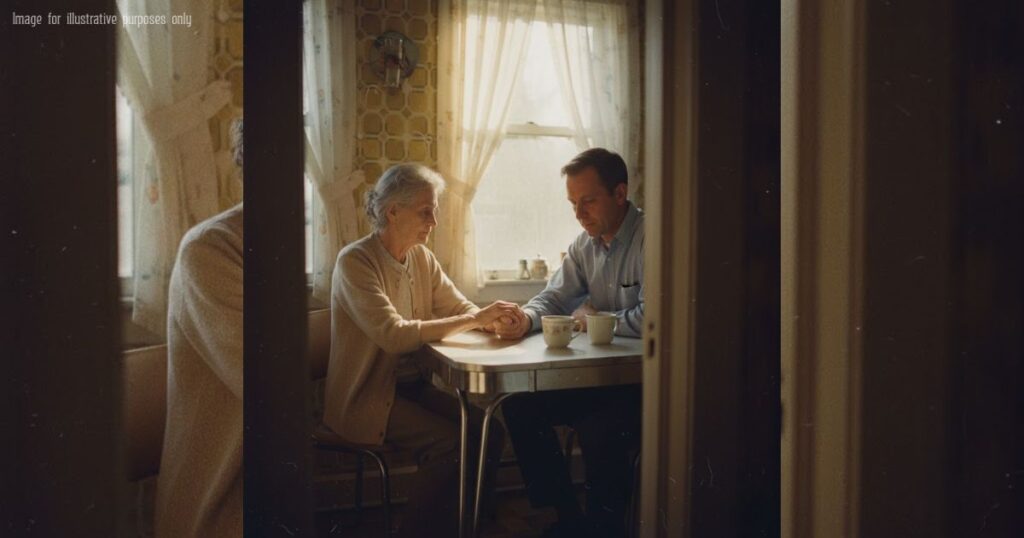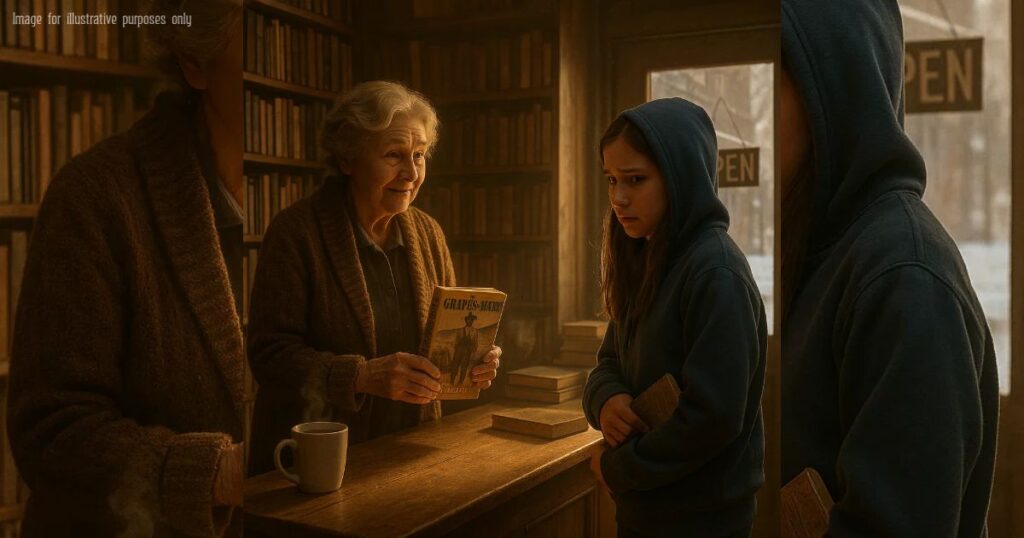Part 2: I Thought the Story Was Over When Lily Walked Into School Holding That Officer’s Hand. I Was Wrong.
I went to bed that night thinking the chapter was closed.
Lily loved her little police bear, she slept, she smiled, she walked into school with two officers like a tiny superhero the next morning.
Happy ending, right?
Roll credits, cue soft music, fade to black.
Except… the internet doesn’t do fade to black.
It does replay, rewind, comment, and fight in the replies at 2 a.m.
After I posted Lily’s story, people started sharing it.
First it was just neighbors. Then friends in other states. Then strangers.
My phone turned into a slot machine of notifications. Every time I refreshed, there were new comments, new shares, new messages.
Some of them made me cry in the best way.
“My faith in humanity is restored.”
“We need more officers like this.”
“Thank you for sharing something good for once.”
But then the other comments started rolling in.
Not trolls. Not all caps. Real people, with real pain, writing paragraphs.
“Glad your daughter had a good experience. My son did not.”
“Must be nice to have officers who show up to fix things instead of making them worse.”
“This feels like a commercial. Not everyone’s reality looks like this.”
I read those comments with my stomach clenched.
At first, I felt defensive.
I wanted to type, “I know not every story is like ours. Let me just be grateful.”
But then, a message from a mom I didn’t know stopped me in my tracks.
“I’m genuinely happy for Lily,” she wrote. “Truly. But my 10-year-old cries when he sees a police car too, for a completely different reason. We live in the same country, but our kids don’t live in the same story. Please don’t forget us when you tell yours.”
I sat there at my kitchen table, phone in one hand, cold coffee in the other, and realized something important:
Two things can be true at the same time.
My story can be beautiful.
Her story can be heartbreaking.
And pretending one cancels out the other is exactly how we stay divided.
Still, there was another part of the story that no one on the internet knew yet.
Because while people were arguing in the comments, my phone rang.
It was the school.
The principal asked me to come in for a meeting.
She sounded nervous and tired, like she’d already had ten hard conversations before 9 a.m.
“Nothing bad has happened,” she assured me. “But we need to talk about the bus.”
I walked into the front office with my heart pounding.
Not because of the principal. Not because of the building.
Because sitting in one of the plastic visitor chairs, staring at his hands, was the bus driver.
He looked smaller without the big steering wheel in front of him.
Older than I thought. Lines on his face. Eyes red-rimmed, like he hadn’t slept much since yesterday either.
The principal invited us into her office.
She spoke first, in that practiced, careful tone administrators use when they’re trying to hold twelve things together at once.
“We read your post,” she said. “We’ve spoken with the driver. What he said was not acceptable. We take it seriously. We’re reviewing training and policies. But… we also thought it might help for you to hear from each other.”
Every part of me wanted to refuse.
I wanted to say, “I don’t owe him anything.”
I wanted to walk out, arms crossed, holding onto my anger like armor.
Instead, I looked at the picture on the principal’s desk—her with a little boy in a pumpkin patch—and I thought about something:
If I believe in second chances for a scared six-year-old, what do I believe for a burned-out fifty-something-year-old who said something awful and knows it?
The driver cleared his throat.
When he spoke, his voice was rough.
“Ma’am,” he said, not quite looking at me, “I am so sorry.”
He didn’t blame Lily. He didn’t say she was too sensitive.
He didn’t say, “Kids these days.”
“I’ve been driving a school bus for twenty-five years,” he said. “I’ve seen fights. I’ve seen kids run into traffic. I’ve seen things you don’t ever want to see. Yesterday I was tired, and those older kids wouldn’t sit down, and your little one was crying, and I just… snapped.”
He swallowed hard.
“When I was a kid, adults used to say stuff like that to scare us,” he went on. “I heard it from teachers, coaches, everybody. ‘The police will come get you if you don’t behave.’ I didn’t even think. The words just came out of my mouth like they’ve been sitting there for fifty years.
But that’s not an excuse. I scared your daughter. I broke your trust. And I am sorry.”
Here’s the part that some of you are going to argue with in the comments:
In that moment, I felt sorry for him too.
Not more than for Lily. Not instead of her.
But alongside her.
Because there he was—a grown man, employed by the district, supposed to be the safe adult on the bus—who had clearly never been taught how much power his words carried.
He had never been trained that threatening kids with handcuffs isn’t discipline; it’s trauma.
The principal laid out the consequences.
He would be removed from Lily’s route. He would attend additional training. There would be a formal write-up in his file.
Other drivers would receive refresher training too.
Then she turned to me.
“What do you need to feel that Lily is safe?” she asked.
I knew what some people online wanted me to say.
They wanted blood. A firing. A public shaming. Name, photo, job gone.
They wanted me to turn my post into a torch and go hunting.
But here’s another uncomfortable truth:
We can’t scream “Don’t ruin kids with one mistake,” and in the same breath demand that one mistake ruins every adult we’re mad at.
So I took a breath.
“I need two things,” I said. “First, I need to know my daughter will not ride with him again. That trust is broken and that’s okay to say out loud. Second, I need to know this isn’t just a note in a file. I need to know this changes something for every kid on every bus.”
The principal nodded.
She promised policy reviews, staff training, clearer language about threats and fear.
Then I did something that surprised even me.
I asked if the driver would be willing to apologize to Lily.
Not to fix everything. Not to erase what happened.
Just so that the next time she saw him, she wouldn’t only see the man who turned her safe place into a prison van.
That afternoon, we sat in a quiet room off the nurse’s office.
Lily held her police teddy bear like a shield.
The driver came in without his hat.
No sunglasses. No keys jangling. Just him.
He knelt down—just like the officers had.
He didn’t touch her. He didn’t crowd her.
“Hi, Lily,” he said softly. “I’m the bus driver from yesterday. I said something very wrong. I told you the police would arrest you if you cried. That was not true. That was not kind. You did the right thing asking for help, and I did the wrong thing by scaring you. I am very, very sorry.”
Lily looked at him for a long time.
I could almost see the wheels turning in her little head.
Finally, she said, “The police help kids.”
He nodded. “Yes. The police help kids.”
“And bus drivers?” she asked. “Are supposed to help too?”
His voice broke. “Yes, ma’am. We are. I’m going to do better.”
She didn’t hug him.
She didn’t have to.
When we walked out, she squeezed my hand and whispered, “Mommy, grown-ups need time-outs too.”
So here I am, writing Part 2.
Because if all you saw was the officers and the teddy bear and the thumbs-up at the school doors, you only saw the pretty half of the story.
Click the button below to read the next part of the story.⏬⏬


